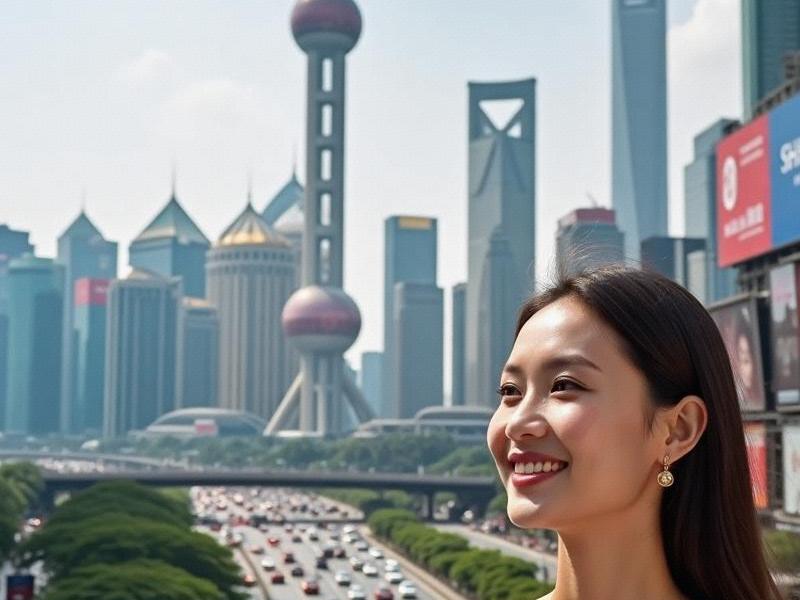This 2,600-word investigative feature explores Shanghai's rapid evolution into a model 21st century city that successfully blends cutting-edge technology with rich cultural heritage, setting new global standards for urban development.

Shanghai's skyline tells a story of compressed time. The Art Deco edifices along the Bund, frozen in 1930s glamour, stare across the Huangpu River at the twisting Shanghai Tower - currently the world's second-tallest building. This visual contrast encapsulates Shanghai's unique urban alchemy: simultaneously preserving history while hurtling toward the future at what locals call "Shanghai Speed."
Economic Powerhouse by the Numbers
- GDP growth: 7.8% annually since 2020 (national average: 5.3%)
- Financial sector contribution: 18.5% of city GDP
- Fortune 500 regional HQs: 87 (Asia's highest concentration)
- Startup incubators: 214 (hosting 12,300+ companies)
- Port container throughput: 49 million TEUs (world leader for 17 years)
"Shanghai operates like a city-sized prototype lab," observes Dr. Helena Wu, urban economist at Fudan University. "Every innovation gets tested here before scaling nationally."
Four Dimensions of Shanghai's Transformation
1. The Digital Leap
- 5G coverage: 99.2% of urban area (world's most connected city)
- AI integration:
Smart traffic lights reducing congestion by 37%
Robotaxi fleet covering 500km²
AI-assisted medical diagnostics in 92% hospitals
- Digital yuan adoption: 68% of retail transactions
上海神女论坛
2. Cultural Synthesis
- Protected historical buildings: 1,843 (with tech-enhanced preservation)
- "Hybrid Heritage" initiatives:
VR recreations of vanished 1920s jazz clubs
AI analysis of Shanghainese dialect variations
Blockchain authentication for traditional artworks
3. Sustainable Urbanism
- Vertical green spaces: 4.3 million m² (equivalent to 600 soccer fields)
- Waste management:
96% recycling rate (world record for megacities)
Underground pneumatic waste collection system
- Renewable energy:
42% of power from clean sources
World's largest rooftop solar array (Pudong Airport)
4. Global Talent Ecosystem
- Foreign professionals: 520,000 (38% increase since 2020)
爱上海419论坛 - International schools: 47 (teaching 18 languages)
- "Golden Visa" recipients: 28,000 high-skilled migrants
- 24/7 multilingual government service centers
Living Laboratories: Shanghai's Innovation Districts
Zhangjiang Science City
- Focus: Biotech, semiconductors, quantum computing
- Notable: 56 national research labs
- Cultural element: Traditional Chinese medicine research center using AI
Lujiazui Financial Zone
- Innovation: Digital yuan testing ground
- Skyline fact: 63% of buildings have smart facades
- Green feature: World's highest urban farm (128th floor)
West Bund Arts District
- Hybrid model: Tech startups housed in former industrial buildings
- Cultural anchor: AI-curated art museum
上海花千坊419 - Sustainability: Riverfront cooling system reduces local temps by 2°C
Challenges and Contradictions
- Housing affordability crisis (average price: ¥82,000/m²)
- Aging population (31% over 60 by 2030)
- Cultural preservation vs. development pressures
- Maintaining social cohesion amid rapid change
The Shanghai Model Goes Global
Key exports of Shanghai's urban philosophy:
1. "Phygital" governance blending online/offline services
2. Cultural-Tech fusion economic development
3. Multi-layered transportation networks
4. "Living Heritage" preservation techniques
As Shanghai prepares to host the 2030 World Expo under the theme "Cities of Shared Futures," urban planners worldwide are studying what Mayor Gong Zheng calls "development with Chinese characteristics and Shanghai features." In an era of urban crises, Shanghai offers both cautionary tales and inspirational models - proof that cities can indeed reinvent themselves without losing their souls.
The ultimate Shanghai paradox? A city racing toward the future keeps finding new ways to honor its past. As fourth-generation Shanghainese architect Peng Li puts it: "Our skyline points upward, but our foundations grow deeper."